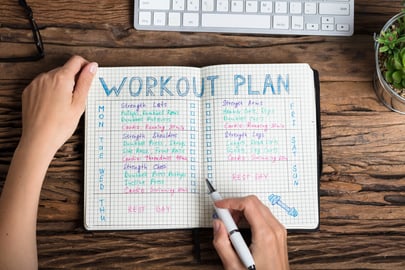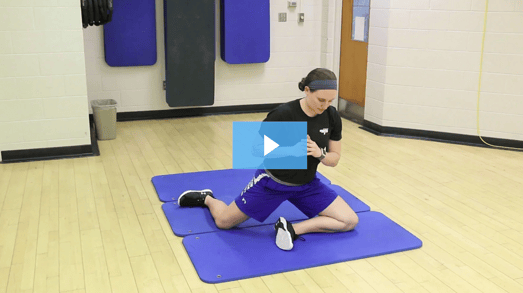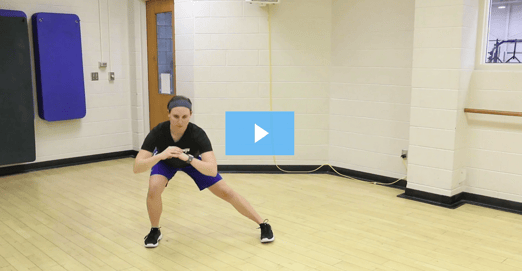When was the last time you were so immersed in an activity or project that you completely lost your sense of time and surroundings, and nothing else seemed to matter? Hopefully it was fairly recently, because these types of experiences are among the most enjoyable a person can have. You might have heard this described as being in “the flow” or “the zone.” The event that came to mind was likely one in which you are highly trained, or at least felt a healthy amount of challenge. Those are often the strongest sources of “flow states,” as psychological researcher Mihaly Csikszentmihalyi has reported in his book Finding Flow: The Psychology Of Engagement With Everyday Life. My goal is to provide you with some tools to help bring about that state of mind in your workouts, and even in your daily life.
 The Rules of Being in the Flow
The Rules of Being in the Flow
In order to fully understand the rules of being in the flow, it is helpful to use a tennis match as an analogy. Imagine Roger Federer, arguably the best tennis player of all time, playing against a ten-year-old tennis player who’s only taken a handful of lessons. Assuming Federer isn’t taking it easy, the outcome of the match is going to be completely lopsided. The ten-year-old beginner will almost instantly become anxious and discouraged, while Roger Federer will quickly grow extremely bored.
Make sure the challenge of the task at hand is appropriate for your skill level.
These two extreme emotional states lie on opposite ends of the flow state continuum. In essence, the most entertaining tennis match to both play in and watch is one in which the players are fairly equally matched. The point at which the two skill levels meet provides the highest possible level of challenge for each player. This is the underlying concept of being in a flow state, or being in “the zone.” The challenge at hand must equal the skill level of the participant. Otherwise, the task might be too easy and become boring, or the challenge is too much to overcome and you’ll be discouraged.
This might sound like common sense, but it can often be difficult to put into practice. The art of maintaining this balance comes from properly increasing the difficulty level at the correct time, otherwise you risk either boredom if the task becomes too easy or frustration if it’s too difficult.
Steps for Getting in the Flow
 1. Have a plan, and don’t cheat.
1. Have a plan, and don’t cheat.
Your workout plan will, and should, be different from anyone else’s. This is because, as Dr. Seuss said, “Today you are you, that is truer than true. There is no one alive who is youer than you.” As correct as these words are, the worst possible plan followed religiously will always be better than the best plan that you quit after one week. Having a plan takes away the anxiety of not knowing what you’ll be doing for each workout. The cognitive effort it takes to develop a workout every time you hit the gym can be overwhelming enough to discourage even the most disciplined folks. Developing a plan can be challenging in itself, however, so you should always seek the guidance of a skilled professional if you’re unsure. In any case, any plan that is followed consistently will still be better than no plan at all.
2. Start slow, and progress intelligently.
Typically I will start a client on a level at which it’s virtually impossible to fail, even bordering on too easy at times. As soon as I notice it’s too easy, it’s time to quickly advance to the next step. If you’re following along, you might notice that this is breaking the rule of the challenge meeting the skill level. However, it’s far more beneficial to start simply and build the confidence to move on quickly than it is to start with something far too advanced and completely discourage the individual with whom I’m working, or worse, cause an injury. If you’re unsure what your starting point is, check out one of our many fitness assessments we offer here at NIFS. I always recommend establishing a baseline dependent upon your goal(s). After all, you can’t get where you’re going if you don’t know where you are.
3. Diligently track your progress.
This means recording your workouts consistently. Just as you need your starting point, you’ll benefit greatly from tracking your week-to-week, or even day-to-day progress. What you are recording is less important than staying consistent with your tracking. Some items I highly recommend tracking are the following:
- Volume (sets x reps)
- Load/Intensity (resistance, weight, speed, etc.)
- Rate of Perceived Exertion (how difficult was a particular set, exercise, or workout?)
Try to implement one or all three of these strategies into your exercise routine and see if it helps you find a groove in your workouts!

This blog was written by David Schoch, CSCS, and FMS. To learn more about the NIFS bloggers, click here.




 The Rules of Being in the Flow
The Rules of Being in the Flow 1. Have a plan, and don’t cheat.
1. Have a plan, and don’t cheat.